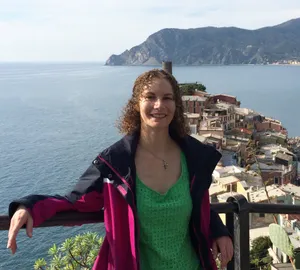SMITHSONIAN ENVIRONMENTAL RESEARCH CENTER
The Secret Orchids of Palau
The island nation of Palau is home to nearly 100 different species of native orchids. More than 30 are found nowhere else on Earth. Smithsonian biologists journeyed to the islands to find secrets to conserving them.
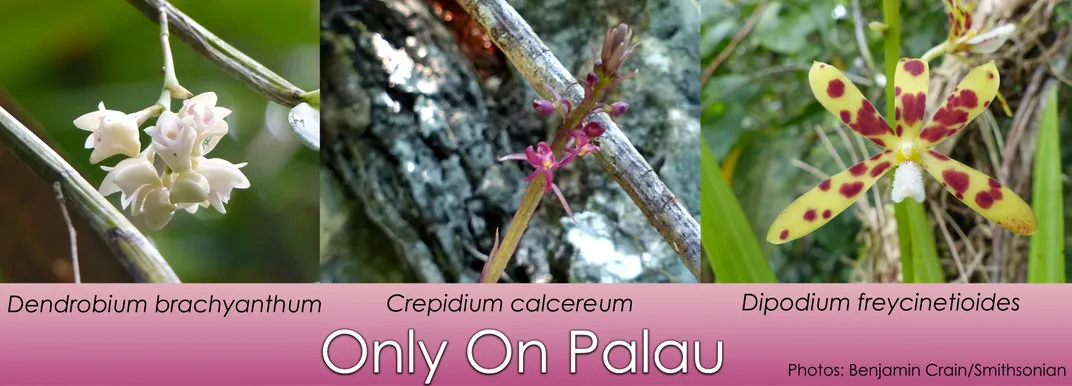
Most visitors to Palau don’t come for its forests. The chain of 300-plus Pacific islands is more famous for its coral reefs, giant rays and hundreds of flamboyantly-colored fish species.
“It’s known as one of the top dive sites on the planet,” said Benjamin Crain, a postdoc at the Smithsonian Environmental Research Center (SERC). Crain is the exception. He’s visited Palau twice in the last year. Naturally fair-skinned, with a dark blond beard and ponytail, Crain has earned plenty of suntans and callouses trekking across the islands’ uneven terrain. He was seeking some of Palau’s forgotten gems on land—its rich diversity of orchids.
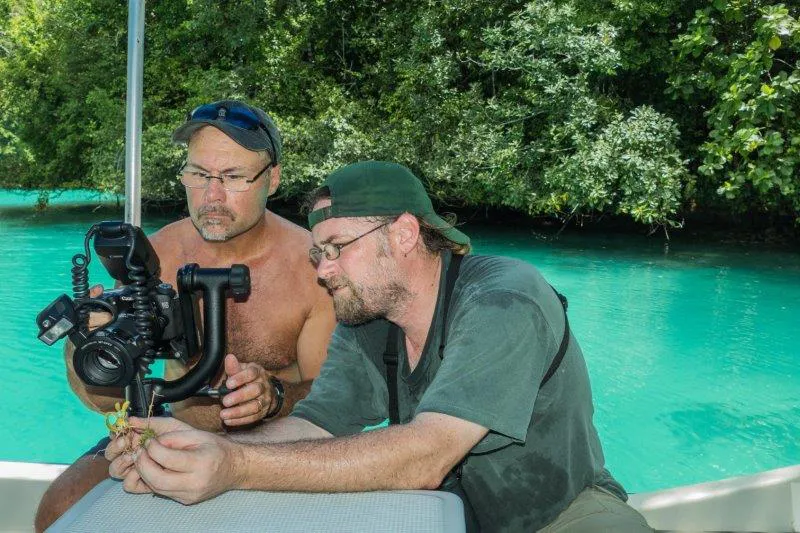
A Conservation Hotspot
Palau is an island nation in the southern Pacific, west of the Philippines and Indonesia. Though it spans 344 islands, its total land area is less than a tenth that of Hawaii. But there’s one area where Palau outstrips Hawaii, and many other island chains: Hawaii has just three native orchid species (the rest are nonnative or invasive). Almost all of Palau’s 90-plus orchid species are native. Some grow nowhere but Palau. And orchids aren’t the exception. Palau is a biodiversity hotspot, with some of the largest natural forests in the western Pacific.
Some of Palau’s biodiversity can get chalked up to location. Sandwiched between Southeast Asia and Oceania, Palau has received “island hopping” species from both continents. Palau’s people also have a strong conversation ethic, which makes them eager to preserve their forests.
“Protection of the environment has always been a part of Palau since I remember,” said Omar Faustino, program manager in Palau’s Ngardok Nature Reserve. “It is due to the fact that the environment is connected to how we live, and it is also connected to our cultural beliefs. In our way of life and our beliefs, marine life and terrestrial life go hand in hand to provide all the resources we need, such as medicine, timber, food security, and water.”
The drive to protect their environment also has made Palauans somewhat cautious of outsiders coming to study it. Crain ran up against that caution while applying for permits to study the islands' orchids. Given the high price exotic orchids can fetch, and the possibility that even the best-intentioned research projects could disturb the environment, it’s hard to blame Palauan conservationists for being wary.
“The main concern is not the person who’s doing the research or leading it, but the effects of the research on the land,” Faustino explained. But after Crain and his team had overcome some initial skepticism, Palauan scientists like Faustino embraced the project.
“Once they knew that we were doing something to try and help out the local flora—once they knew that we weren’t orchid pirates—they were really enthusiastic,” Crain said.
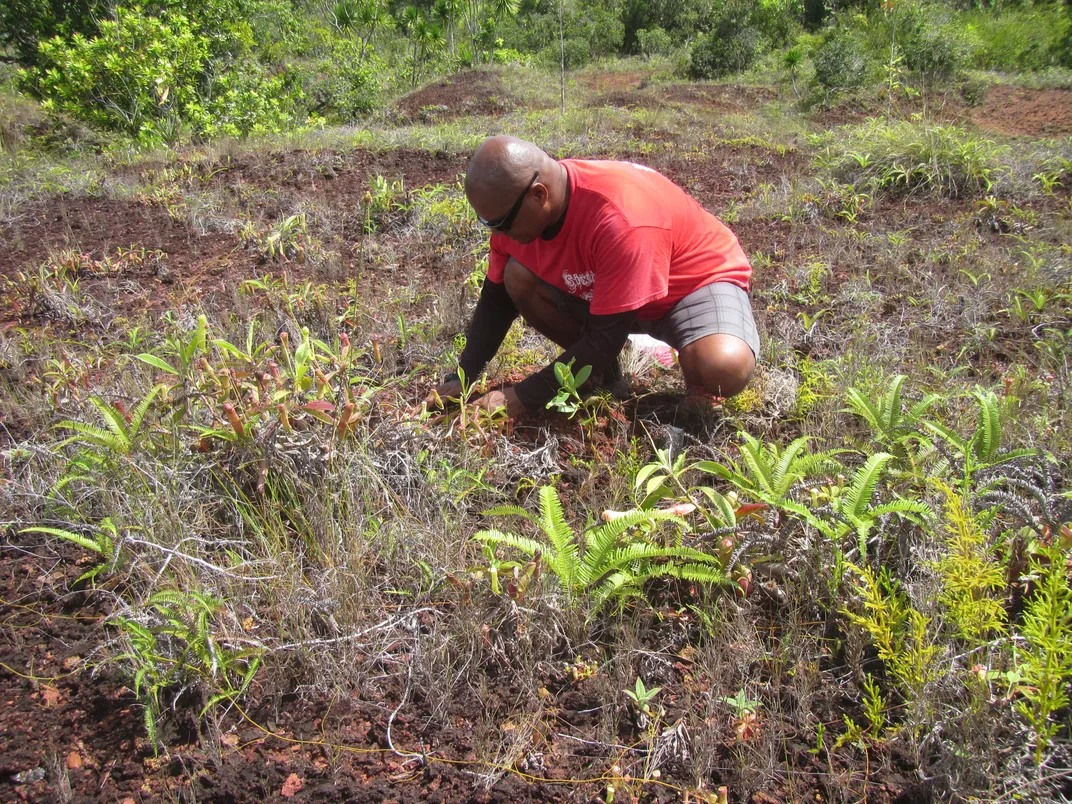
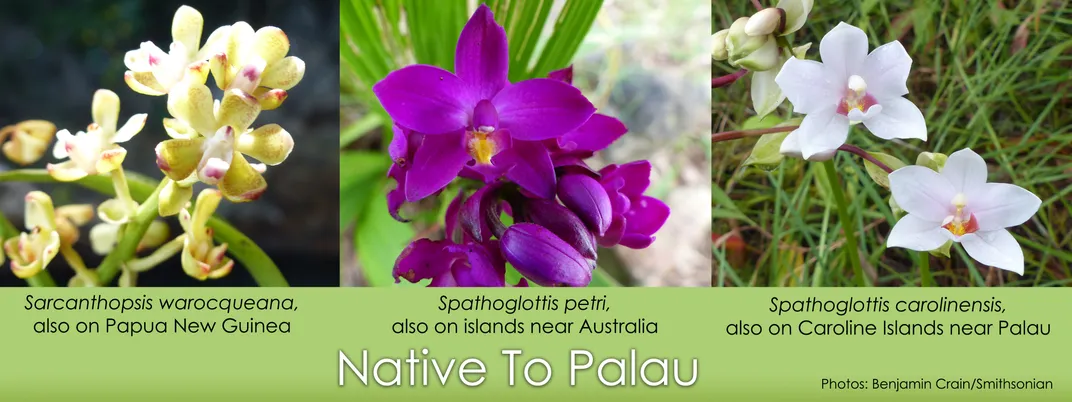
Palau has two kinds of islands, sheltering different kinds of orchids. Crain spent most of his time exploring Babeldaob, Palau’s largest island. Babeldaob rests on an extinct volcano. It’s covered in red, weathered soils, with tropical forests in the lowlands. Volcanic islands like Babeldaob harbor the widest orchid diversity in Palau, with “terrestrial orchids” (orchids that grow in soil) and “epiphytes” (orchids that grow on trees).
Dotting the sea south of Babeldaob are hundreds of smaller “rock islands” made of limestone. Here, the terrain was more precarious.
“It’s basically like walking on uplifted coral….It’s an ankle-breaker,” Crain said.
Rock island orchids tend to be tree-hugging epiphytes. But several orchid species managed to flourish on both types of island. One especially tough terrestrial orchid, the purple Crepidium calcereum, grows only on Palau’s rock islands.
Before arriving, Crain’s team recorded 94 orchid species on Palau by scouring museums, herbaria and literature. In the field, they discovered a couple more species never formally documented on Palau, bringing the total to 96 (for now). One, a member of the genus Agrostophyllum, possesses long dark leaves and tiny flowers clustered into a tight ball. Crain said they’re still not sure exactly what species it is, but its nearest relatives grow in Southeast Asia. Another with white and yellow flowers, Dendrobium crumenatum, also grows in Southeast Asia. A few Bulbophyllum orchids (orange on the big island, yellow or white on the rock islands) may even be hybrids, according to preliminary genetic analyses from SERC ecologist Melissa McCormick. But they need more info before making a final call.
Perhaps even more striking than the beauty or diversity of Palau’s orchids is their uniqueness. More than a third—33 species—grow only on Palau. At least nine are very rare. It’s an odd conservation paradox: In a place with an almost embarrassing richness of flora, why would nearly a tenth of its orchids struggle to survive?
Orchids, Orchids Everywhere
Crain’s team journeyed to Palau in September 2017 and February 2018 at the request of the U.S. Forest Service. Its Institute of Pacific Islands Forestry wanted more information on Palau’s orchids, and they knew SERC had experience studying orchids as the headquarters of the North American Orchid Conservation Center.
The team’s first goal was nailing down how many orchid species Palau has. That became tricky once the team realized just how abundant orchids are on Palau, period.
“There would literally be epiphytic orchids that would cover the tree from the ground all the way up to where I couldn’t even see them,” Crain said.

The Underground Network
The key to any orchid’s survival lies underground. Orchids’ tiny, dust-like seeds can’t germinate without nutrients from special fungi in the soil.
“Without the fungus in the life cycle, the orchid is pretty much stuck,” said Lawrence Zettler, an orchid biologist at Illinois College who partnered with Crain. “It’s not going to develop. It’ll just die.”
But not all orchids need the same fungi. Some orchids can choose from dozens of fungus “donors.” Other orchids pair up with just one species. To conserve Palau’s rare orchids, Crain and the other scientists needed to know which fungi they required.
On Crain’s first Palau trip, his team collected fungi-covered root samples from nearly 90 orchids. Because the U.S. government views foreign fungi as pests or disease threats, he needed a special quarantine facility to house them. Enter Lawrence Zettler. Zettler directs the Orchid Recovery Program at Illinois College. His lab includes a USDA-certified quarantine room perfect for growing fungi.
“It’s under lock and key, 24 hours a day,” Zettler said.
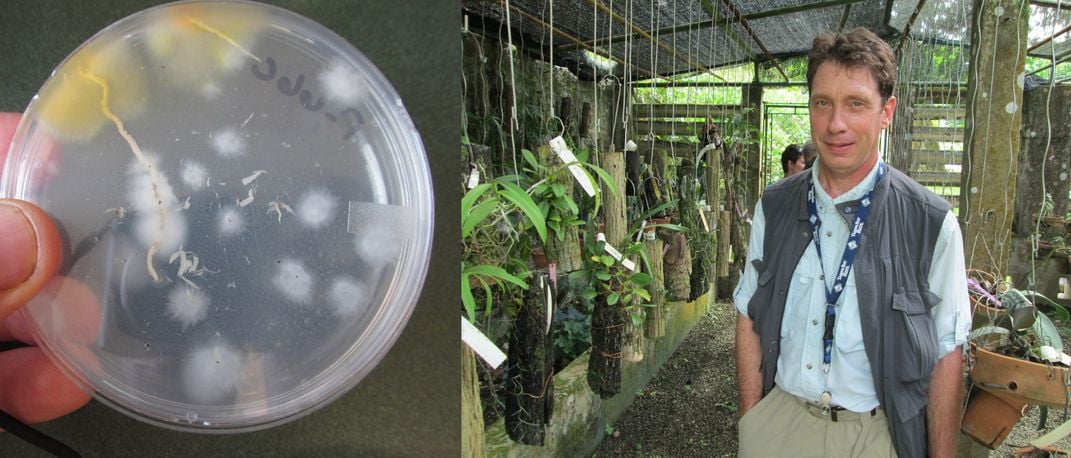
Since last fall, Zettler and his students have been isolating fungi from the Palau orchid roots and growing them on petri dishes. Zettler suspects some of Palau’s orchids are rare because they’re compatible with fewer fungi. But they’re still awaiting results of molecular work to identify the fungi. Until then, he said, the jury is out.
Crain and Zettler both hope to launch another Palau expedition. They have 29 fungal cultures growing in Zettler’s lab in Illinois. If scientists collect orchid seeds too, there’s a chance they could germinate some of Palau’s more uncommon orchids in the lab and eventually propagate them into the wild.
The future of Palau’s orchids is far from certain. Besides the usual threats (poachers, development, or vanishing fungi), sea-level rise is slowly eating away at the islands. If rising seas claim some of the orchids’ territories, conservationists may need to find new homes for these orchids outside Palau.
“Climate change or human development may have some influence on their decline,” Faustino said. “And we hope it does not end that way for Palau.”
Lab-to-wilderness propagation is still years away. But if the scientists can pull it off, it could mean additional ecotourism revenue for Palau, and a new lease on life for some of the world’s rarest orchids.

